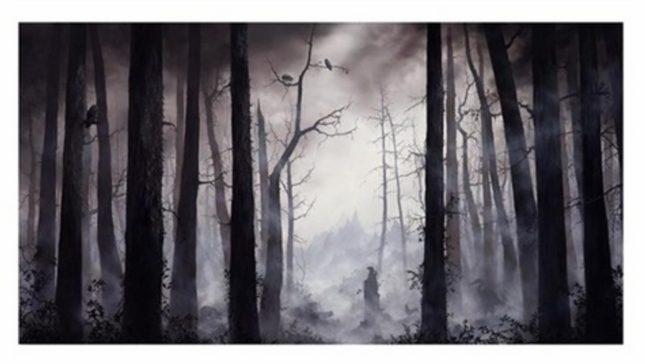
Tribal Druid & Native
-

Brian Mashburn Walking Shadows AP Giclee Print by Brian Mashburn
Walking Shadows AP Artist Proof Giclee Print by Brian Mashburn Artwork Limited Edition Print on Fine Art Paper Graffiti Pop Street Artist. AP Artist Proof 2018 Signed & Marked AP Limited Edition Artwork Size 24x13.75 Walking Shadows AP: A Giclee Print Elevating Street Pop Art & Graffiti Walking Shadows AP, an Artist Proof giclee print by Brian Mashburn represents a synthesis of street art sensibilities and fine art precision. As an Artist Proof from 2018, it holds a special place in Mashburn's collection, offering insight into his creative process. The piece measures 24x13.75 inches, allowing for an immersive viewing experience. Signed and marked by the artist, this limited edition print is a tangible connection to the artist's vision and a coveted item for those who appreciate the subtle infusion of graffiti art in pop culture contexts. Signature and Significance in Street Pop Art & Graffiti Artwork The signature on a piece like Walking Shadows AP is more than a simple autograph; it is a seal of authenticity and a symbol of the artist's intimate connection with his work. In the context of Street Pop Art and graffiti Artwork, such a signature elevates the print from a mere copy to an artifact of cultural significance. The AP designation further underscores its rarity, as Artist Proofs are typically reserved for the artist's personal use or select collectors. Artistic Elements of Walking Shadows AP The artwork's title, Walking Shadows, alludes to the transient nature of light and life, recurrent themes in Mashburn's oeuvre. The giclee print medium is particularly suited to capturing the nuanced gradations of shade and tone that characterize Mashburn's landscapes, filled with mist and the skeletal remains of trees. The dimensions of this particular print are chosen to enhance the ethereal quality of the depicted scene, drawing the viewer into a contemplation of the fleeting moments it captures. The Interplay of Medium and Message In Walking Shadows AP, the choice of fine art paper as the medium for the giclee print brings an additional layer of texture and depth to the artwork. This choice reflects a deliberate move by Mashburn to bridge the often perceived divide between street art's raw energy and the refined techniques of fine art printmaking. The result is a piece that resonates with the authenticity of graffiti art while maintaining the delicacy of pop art aesthetics. Impact and Legacy of Brian Mashburn's Prints The impact of Brian Mashburn's work in Street Pop Art and graffiti Artwork is significant, with Walking Shadows AP serving as a prime example of his influence. The print's release as a limited edition makes it a valuable collector's item and ensures that each piece retains a sense of exclusivity. As street art continues to gain recognition in the art world, Mashburn's prints stand as milestones that capture the evolving narrative of this dynamic art form. Cultural Resonance of Walking Shadows AP The cultural resonance of a piece like Walking Shadows AP cannot be overstated. In a world where the distinction between high art and street art is increasingly blurred, Mashburn's work serves as a testament to the potential of graffiti art to convey profound themes and to hold its own in the gallery space. This Artist Proof giclee print, through its evocative imagery and impeccable execution, encapsulates the spirit of Street Pop Art and graffiti Artwork and continues to inspire dialogue and admiration among art enthusiasts and critics alike.
$462.00


